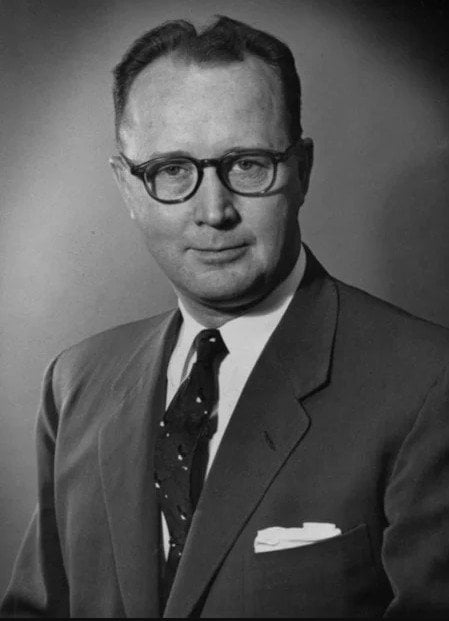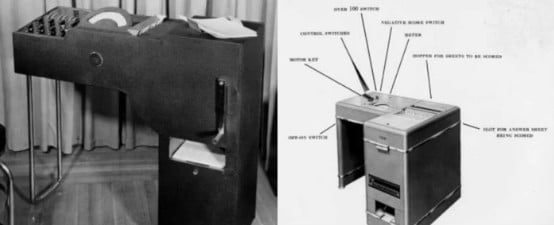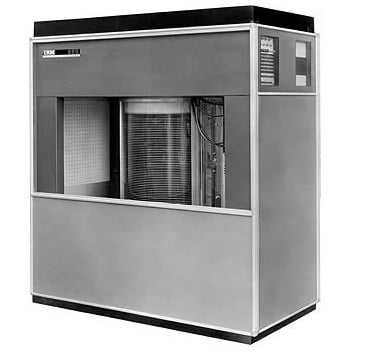Who Was Reynold Johnson?
Born in 1906, Reynold Johnson was a remarkable American inventor, one of IBM’s most prolific inventors, specializing in electromechanical devices. Owning over 90 patents, Johnson was popularly regarded as the father of the disk drive, automatic test-scoring equipment, microphonograph technology (a type of videotape), and talking books.

Reynold Johnson received a bachelor of science degree in (science) education administration in 1929 at the University of Minnesota and obtained his first job at Ironwood High School on the Michigan Peninsula, where he taught mathematics and science. Soon he got a firm conviction that measurement of educational performance was critical to teaching and thus started his career as an inventor in the early 1930s.
Quick Facts
- Full Name
- Reynold Johnson
- Birth
- July 16, 1906
- Death
- September 15, 1998
- Net Worth
- N/A
- Awards
- Computer Pioneer Award.
- Toy of The Year Award
- Franklin Institute’s Certificate of Merit
- National Medal of Technology.
- Children
- Karen, Philip, and David.
- Nationality
- American
- Place of Birth
- Minnesota, United States
- Fields of Expertise
- [“Computer Science”,”Inventor”]
- Contributions
- Disk Drive and Test Scoring Machine.
Johnson died on September 15, 1998, aged 92 years.
Early Life
Reynold Benjamin Johnson was born on his family’s farm near Kingston, north of Dassel, a small town in Meeker County, Minnesota, on July 7, 1906. Johnson was the ninth of ten children, having seven sisters and two brothers.
His parents, John Alfred Johnson and Elizabeth Erickson-Johnson were Swedish immigrants. The names of his other siblings are Eleanor Electa, Millicent, Hildur Mabel Sophie, Effie, Phoebe, Signe Wilhelmina, Myrtle Marie, Leroy Theodore, and Donovan Albert.
Although raised on his family’s farm, Johnson has shown a keen mechanical talent from his childhood days. He built a submersible submarine at an early age, which he exhibited in the horse trough.
After completing his early schooling in Dassel, Johnson proceeded to the Minnehaha Academy High School in Minneapolis, where he graduated in 1925. Then he graduated from the University of Minnesota in 1929 (BS in Educational Administration).
Career
Phase 1
After graduating from the University of Minnesota, Johnson worked for Ironwood High School on the Michigan Peninsula, where he taught mathematics and science for 4 years.
Phase 2
Reynold Johnson lost his job in 1933 during the Great Depression. However, fortunately, Johnson was hired by IBM in 1934, where he worked until 1971 before retiring. While working at IBM, Johnson had over 90 patents to his name.
Phase 3
Although retired, Reynold Johnson didn’t stop inventing. He started a consulting company in Palo Alto, the Education Engineering Associates, where he developed a microphonograph that allows children to point a hand-held device at a picture or word in a book and hear it tell them what it was. He was awarded the National Medal of Technology in 1986 by President Ronald Reagan.
Johnson was also responsible for the half-inch videocassette tapes used by Sony for a long time. While on loan to Sony for another project, he came up with a prototype of a VCR tape less than half the width of the tape used by Sony prior to his prototype.
What Did Reynold Johnson Invent?
Invention 1 – Johnson’s Test Scoring Machine
Having entered teaching with those strong convictions about testing, Rey soon began to review his and fellow teachers’ textbooks and quizzes, believing that there must be a way to automate the grading task. His first experiments and models made use of holes that students could punch out on perforated test sheets combined with an electrical contact system that switched on lights where answers had been correctly identified.

While carrying this idea to application in a potential product, with the investment of much time and effort, he suddenly remembered that pencil marks are conductive and discarded the first path in favor of a better approach using pencil marks to identify the correct answer on the test sheet.
This experience of a better idea making obsolete a good idea underlies his subsequent insistence that all possible solutions to a problem must be examined to find the best solution. Critical to his “machine” in its earliest stages was the use of close tolerance, separate answer sheets where pencil marks could be read by the machine within wide tolerances for the resistance of the pencil marks themselves.
Unfortunately, in 1933 Johnson lost his job as the school was scaled back to a Depression-era budget. The following months were hard times, even though his ideas had attracted national attention. His efforts were assisted by his fiancée and a teaching colleague, Beatrice (Bea), who wrote a newspaper story about the device.
Fortunately, Professor Benjamin Wood at Columbia University, a proponent of automatic testing working with IBM, was unsuccessful when designing a machine for this purpose. Johnson knew of Wood’s interest in testing and provided a description and a model for him. Wood informed IBM’s president, Watson, that the concepts were sound.
Johnson and Bea were brought to New York City to evaluate his ideas and his model. After weeks of discussion, and while Watson was on vacation, Johnson was informed that an analysis showed that his concepts were unfortunately not acceptable.
While Johnson prepared to demonstrate that the analysis was incorrect, Wood took a different route and called Watson to inform him that IBM was about to make a mistake. IBM purchased Johnson’s invention shortly thereafter and hired the unemployed high school teacher (Johnson) as a senior engineer in Endicott, New York. The test-scoring machine, the IBM 805, was announced in 1937, and over 1000 units were produced during the years.
Invention 2 – Johnson’s Hard Disk Drive
Johnson went on to a prolific career in Endicott, where he had fifty-three patents, mostly in the area he called input, before leaving for San Jose, California, in 1951, when he got an offer that was to change his life and work and to have a significant impact on IBM and the computing world.
Reynold Johnson was asked to move to California to head a new laboratory where IBM would have a better chance to hire the engineers needed to move into the technical areas established and provide closer contact with IBM’s most innovative customers. He was given the charter to define his own programs so long as they did not duplicate the programs of others, and he was expected to devote some of his efforts to adapting IBM machines to special customer needs.

With Johnson’s background in data input, then mainly punched cards, programs were soon directed to automate the input function. The massive input data source he addressed was the punched-card tub file from which, for each transaction, cards were pulled to identify customers, inventory, pricing, etc., for subsequent punch-card processing.
The tub file was that eras’ data source with random access to the data. Many configurations were addressed for machine access to stored data, including magnetic data storage on rigid rotating disks, drums, tape strips, and wires.
Early in the life of the new lab, Johnson became convinced that disks offered significant advantages over the other alternatives and, despite obvious unsolved problems, directed the laboratory in that direction.
His belief in the innovative capabilities of his staff was rewarded when in a relatively short time, from present perspectives, air bearings were providing close spacings to rotating and wobbling disks, the electronics of read-write heads were taking shape, and the disk and its magnetic coating were in the early definition. The new disk file was then defined as a five-million-character machine, leading to the establishment of the IBM 350 Random Access Method of Accounting and Control.
The product was transferred from Johnson’s lab to a new development lab and subsequently was shipped in September 1956 under the name IBM 350 Disk Storage, integrated into IBM’s new model computer— IBM 305 RAMAC (Random Access Memory Accounting) system.
It was nothing interesting as a design; it was one of the last vacuum tube systems designed in IBM. However, it introduced disk storage technology to the world, becoming a market hit, and more than 1000 IBM 305s were built before production ended in 1961.
Reynold Johnson: Marriage, Divorce, Children, and Personal Life
Marriage
Rey Johnson, father of the disk drive, married his teaching colleague, Beatrice Pearl Rashleigh, in 1940.
Children
With his wife, Beatrice Pearl Rashleigh, Rey Johnson had three children, a daughter, Karen, and two sons, Philip and David.
Tragedy
Rey Johnson died of metastatic melanoma in Palo Alto, California, on September 15, 1998, at the age of 92. Melanoma is a type of skin cancer caused by melanocytes, a pigment-producing cell. Melanoma occurs on the skin, mouth, eye, and sometimes intestines.
Reynold Johnson: Awards and Achievements
Reynold Johnson received several awards throughout his active years of inventing. Below are two of them:
Award 1
After retiring from IBM in 1971, Reynold Johnson developed microphonograph technology. The technology was first used in the “Talk to Me Books toy.” The toy went ahead to win the Toy of the Year Award.
Award 2
President Ronald Reagan also awarded Johnson the National Medal of Technology in 1986.

